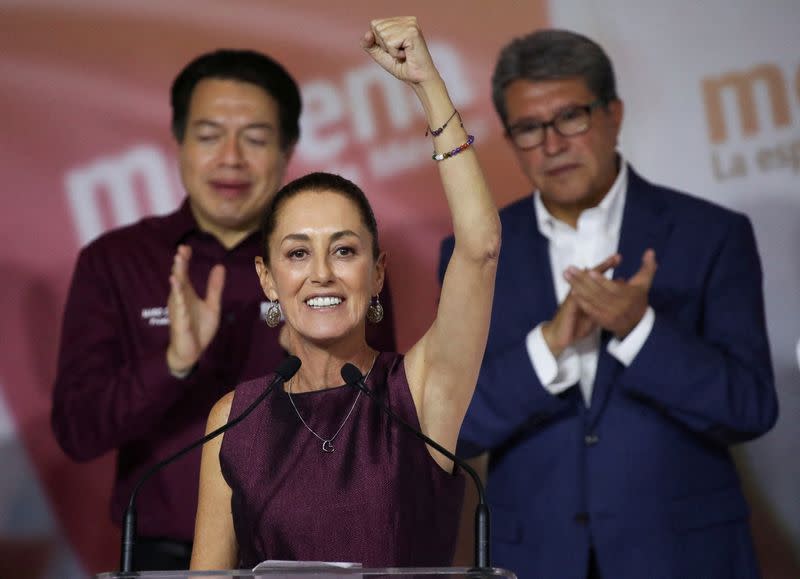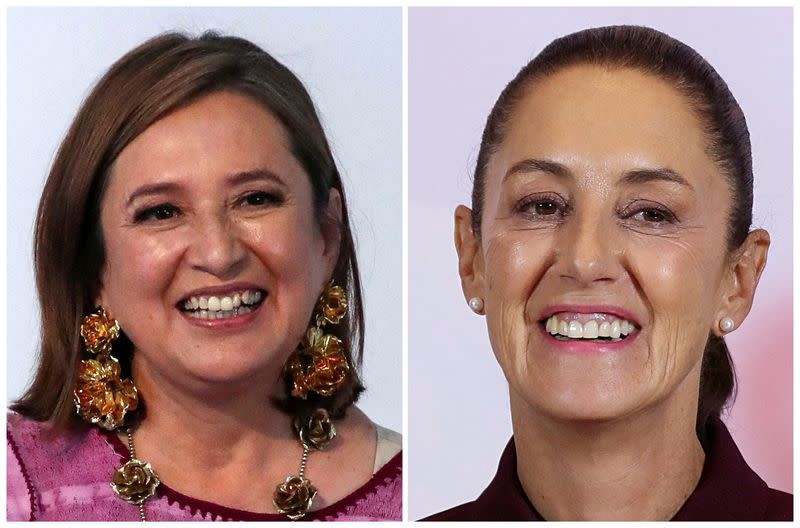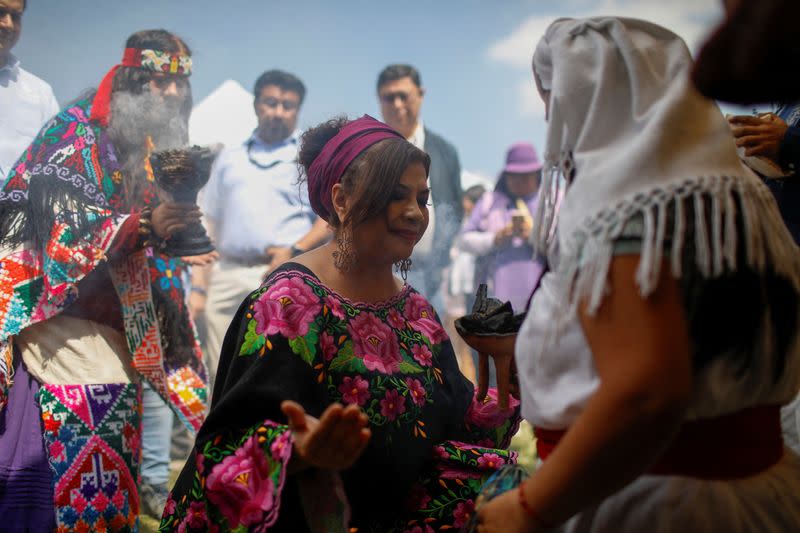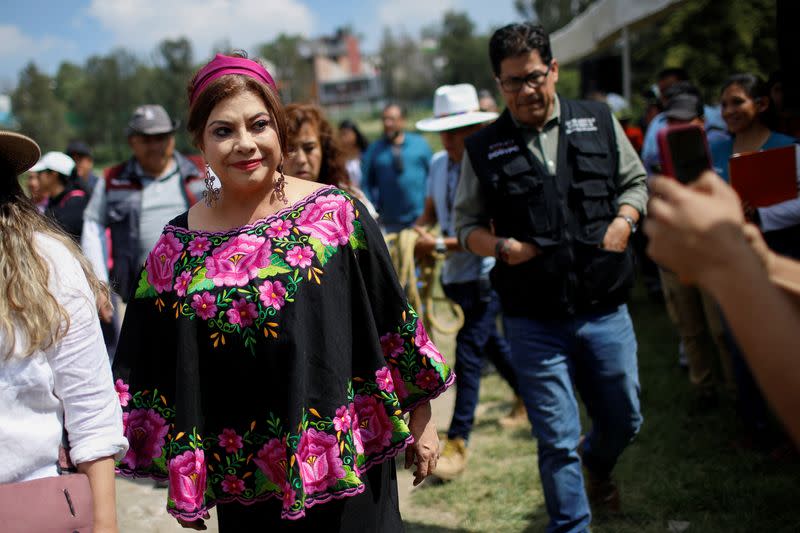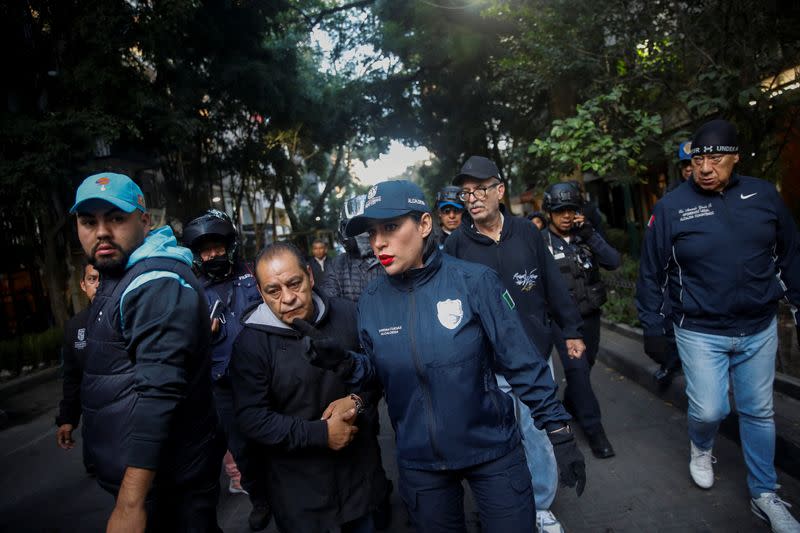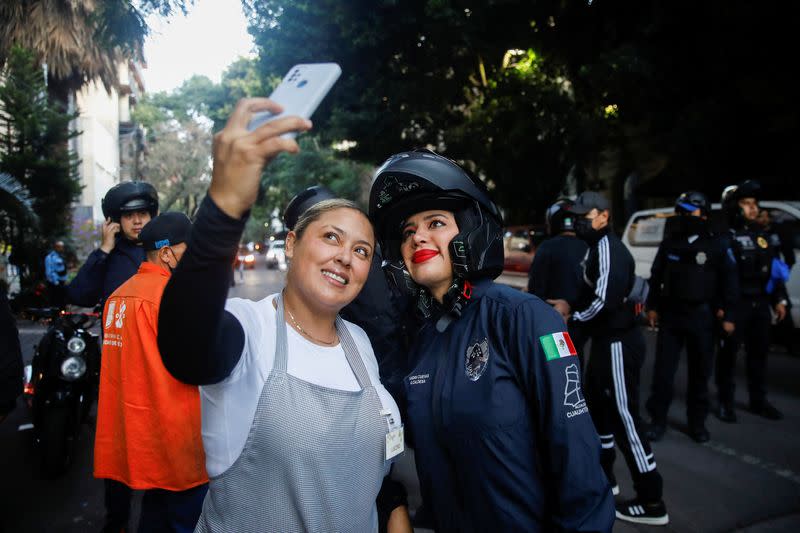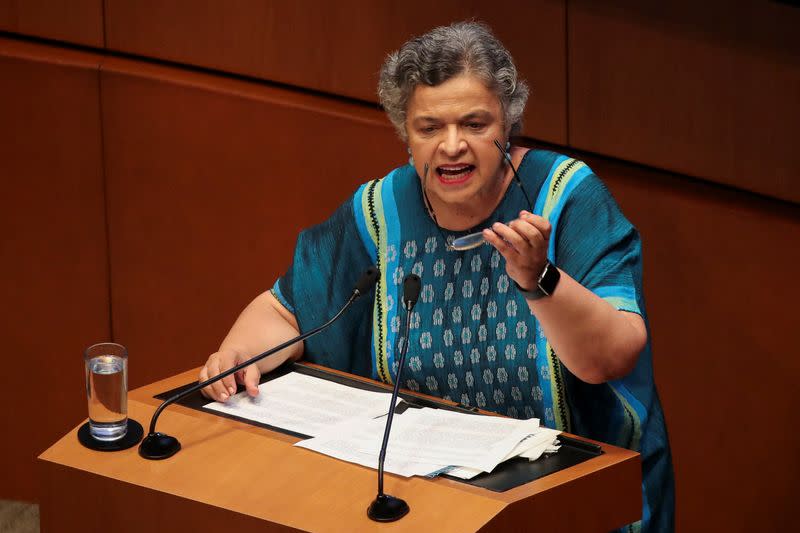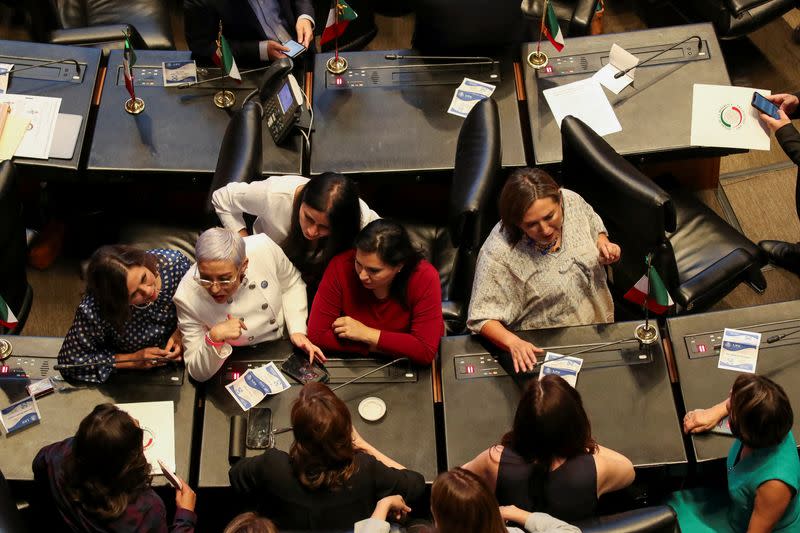In 'macho' Mexico, stage set for first female president
- Oops!Something went wrong.Please try again later.
By Dave Graham
MEXICO CITY (Reuters) - When Mexican presidential contenders Claudia Sheinbaum and Xochitl Galvez entered politics at the start of the millennium, more than four in five senators in the country were men. Today, the majority are women.
The rise of Sheinbaum, who was named on Wednesday as the ruling party's candidate for next year's presidential election, and Galvez, the main opposition contender, is the culmination of a rapid process of female inclusion in politics since 2000.
"It's extraordinary in a patriarchal country," said Josefina Vazquez Mota, who made history in 2012 as the first female presidential candidate for one of Mexico's main parties.
"I'm sure this is going to be a watershed," added Vazquez Mota, a senator who, like Galvez, represents the center-right National Action Party, or PAN, which ruled from 2000-2012.
Confirmation that both leading candidates for the June 2 election would be women came within days of the Mexican Supreme Court striking down a federal law criminalizing abortion.
Many women in Mexico, who make up 52 percent of the population, hope the government that takes office in October 2024 will empower them as never before.
"Just imagine having a female president in a country as macho as Mexico!" said Maria del Carmen Garcia, 70, a secretary who said women's pay needs to catch up with men's.
Latest polls suggest either former Mexico City Mayor Sheinbaum, the current favorite and candidate of leftist President Andres Manuel Lopez Obrador, or Galvez, a businesswoman-turned senator, are likeliest to win the election.
Still, respected former foreign minister Marcelo Ebrard, who was runner-up to Sheinbaum in the ruling National Regeneration Movement's presidential primary, denounced the contest as unfair and could soon mount a rival bid.
Almost half of continental Latin America, including Brazil, has already elected female heads of government, but only Honduras and Peru currently have women presidents. Victory for Sheinbaum or Galvez would make them the first woman to win a general election in the United States, Mexico or Canada.
Home to the world's second biggest Roman Catholic population, Mexico was for years a bastion of traditional values that tended to limit women's access to a life outside the home.
"We're only just starting to feel these changes now," said Angelica Rodriguez, 49, an accountant who said she lost her government job two decades ago because she was pregnant. "Because before, men just looked out for men."
Women remain seriously under-represented in board rooms, are paid significantly less than male counterparts, and are more likely to work in the informal economy, studies show.
Forced marriages of girls still plague Mexico, and violence against women has been rising.
Four in every 100 girls aged 12-17 were either married or in a voluntary conjugal union, or had been, according to a 2020 census.
Meanwhile femicides, or gender-motivated killings of women, have more than doubled since 2015, when 427 were recorded.
CROSSED CULTURES
Modern Mexico took shape as the Church's hold on daily life since the Spanish conquest of the Aztec Empire began weakening in response to secular and revolutionary upheaval that often sidelined women, viewing them as a conservative constituency.
Yet no symbol is more synonymous with Mexico than its patron saint, the Virgin of Guadalupe, who according to tradition, in 1531 appeared to an early Aztec convert to Christianity.
The Marian vision was central in converting Mexico to Catholicism, fusing its Mesoamerican and European cultures, and making the virgin something akin to mother of the nation.
"She's the one that managed to unite the two cultures that seemed irreconcilable," said former candidate Vazquez Mota.
For most of Mexico's colonial era, women were largely relegated to the periphery of public affairs.
A famous exception was 17th century nun, writer and poet Sor Juana Ines de la Cruz, an inspiration to feminists who clashed with the Church over women's right to knowledge.
Pressure began building to enfranchise women voters in the early 20th century, notably in the southeastern state of Yucatan, said Lorenzo Meyer, a historian at the Colegio de Mexico.
Clashes in the 1920s and '30s between anticlerical heirs of the Mexican Revolution and the Church slowed the drive because of concerns that women, who were deemed to be more pious than men, could hinder the government's revolutionary agenda, he said.
Mexican women did not win full voting rights until 1953, 33 years after the neighboring United States.
Spurred on by the end of one-party rule in 2000 and international advances in women's rights, reforms to increase their political clout gathered pace. By 2019, Mexico had enshrined parity of representation in the constitution.
If parties fail to field at least 50% women candidates, they can be barred from competing.
Mexico now has the joint fourth-highest level of female inclusion in the national parliament worldwide, according to the Inter-Parliamentary Union, a global body of national parliaments. It is well ahead of Brazil, Britain and the United States, where only a quarter of senators are women.
Today, Vazquez Mota said, her PAN ally Galvez no longer had to respond to whether Mexico was ready for a female president.
"I got this question every day and every night of my campaign across the entire country," she recalled.
Polls indicate that Mexico is ready.
A study published in May by national statistics agency INEGI showed over nine-tenths of the public strongly or somewhat backed having a woman president.
Mexican law restricts presidents to a single six-year term.
Since the 2018 election campaign, more women have won state governorships than in the rest of Mexico's history; the country has also appointed its first female Supreme Court chief justice and central bank governor. Federal Congress is now half female.
Gabriela Cuevas, a former federal lawmaker and first Mexican to head the Inter-Parliamentary Union, said the political victories were only part of a longer journey: "What's been done in politics has still to be achieved in all walks of life."
Working poverty rates have been improving in Mexico, but at the end of the first quarter still afflicted nearly 38% of the population, official data show.
Think tank Mexico Como Vamos reported in May that for every 100 men in working poverty, there were 112 women.
The median wage gap between women and men in Mexico stands at 16.7% - marginally narrower than the U.S., according to data compiled in 2022 by the OECD group of developed nations. But it was above Brazil (11.1%), Turkey (10%) and Argentina (6.3%). INEGI puts the gap higher at 42%, based on mean average income.
And a 2022 study of 182 listed firms by think tank the Mexican Institute for Competitiveness showed that women occupied 11% of board seats and made up just 4% of CEOs.
(This story has been refiled to remove the duplicate text after paragraph 24)
(Reporting by Dave Graham; Additional reporting by Stefanie Eschenbacher and Alberto Fajardo in Mexico City; Editing by Stephen Eisenhammer and Claudia Parsons)
